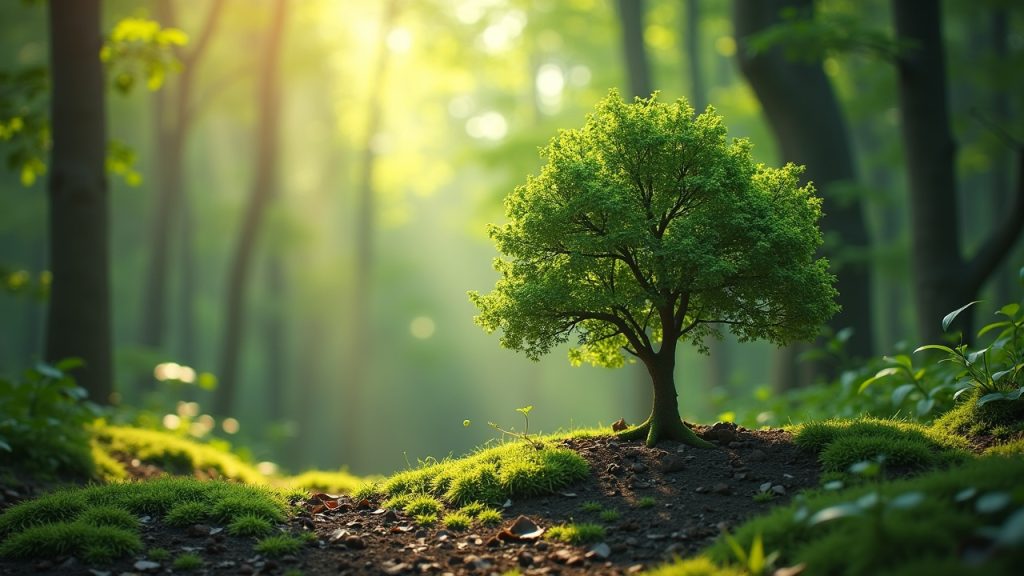The Lifecycle of Trees and Their Care
Imagine a world without trees. No shady parks, no forests, no rustling leaves in the breeze! Trees are so much more than just part of the scenery, they are the planet’s silent giants, sustaining life in countless ways. From tiny seeds to towering elders, trees undergo remarkable transformations throughout their lifespans.
Understanding the lifecycle of trees, and the care they require at each stage, not only helps us cultivate healthier forests and landscapes but also fortifies our connection to the natural world.
The Beginning: Seeds and Germination
Every mighty tree begins its journey as a humble seed. These seeds are formed through a complex process involving pollination and fertilisation, resulting in the genetic blueprint for a new tree. Nature employs an array of dispersal methods. For example, wind carries maple seeds like little helicopters, birds transport berries, and squirrels bury nuts that sometimes escape retrieval.
For a seed to germinate, specific conditions must be met. Adequate moisture, the right temperature and exposure to light. Once these requirements are fulfilled the seed breaks dormancy, sending out a tiny root (radicle) and shoot. This is a vulnerable phase, and early intervention matters. Seedlings benefit from protection against harsh sunlight, strong winds and competition from weeds. Gentle watering and mulch can make all the difference at this stage.
Sapling Stage: Growth and Vulnerability
As the seedling grows, it enters the sapling stage. A period marked by rapid vertical growth and the development of distinctive leaves and branches. Saplings, though sturdier than seedlings are still susceptible to numerous threats.Pests like caterpillars and beetles, diseases such as mildew or Canker, competition for light and nutrients from surrounding vegetation, all pose risks. Animal and human interference can also hinder development.
Nurturing young trees involves regular inspection, the use of protective guards or fencing, and the removal of competing plants. Staking may help prevent wind damage, but it should be temporary to avoid stunted root growth.
Maturation: Developing into a Mature Tree
With time, a sapling becomes a mature tree, boasting an expanded canopy, thicker trunk, and a complex root system. Growth patterns change, instead of shooting upward rapidly, trees focus on expanding branches and roots, strengthening their structure.
Pruning becomes vital at this stage. Correct pruning shapes the tree, removes weak or crossing branches, and prevents disease entry points. Space management is equally crucial. Crowded trees may compete for light and water, stunting each other’s growth. Nutrient-rich soil and consistent deep watering support robust development, especially during dry periods. Mulching remains beneficial, regulating soil moisture and temperature.
The Giant: Old Age and Ecological Contribution
Mature trees are ecological powerhouses. They sequester carbon, filter pollutants, stabilise soil, and provide habitat for countless species. Their shade cools cities, and their roots prevent erosion. Yet, like all living things, trees eventually age.
Signs of aging include slower growth, deadwood accumulation, and thinning foliage. Older trees may become hollow or develop fungal growths. Specialised care such as cabling large limbs, removing hazardous branches and monitoring for disease can extend their lifespan and preserve their ecological value.

Tree Reproduction and the Cycle Renewed
Reproduction is the final and in many ways the most profound stage in a tree’s lifecycle. Flowering is the prelude: trees produce blossoms that attract pollinators (insects, birds, or even the wind). Successful pollination leads to seed formation.
Methods of seed dispersal range from wind and water to animal-assisted transport. Human intervention through planting or grafting often accelerates or expands tree populations. While natural propagation ensures genetic diversity, human-assisted methods can help restore threatened species or establish trees in challenging environments.
Common Tree Care Mistakes and How to Avoid Them
Even well-meaning caretakers can make mistakes. Over or under watering is a frequent issue. Trees need deep, infrequent watering rather than daily sprinkles. Too much water can drown roots; too little and the tree may never thrive.
Pruning errors are also common. Removing too much foliage, pruning at the wrong time, or making improper cuts can stress or even kill a tree. Always use sharp, clean tools and follow guidelines specific to each species.
Disease prevention hinges on early recognition. Discoloured leaves, cankers, or unusual growths, warrant prompt attention. Sanitise equipment, avoid wounding trees and consult an arborist when in doubt.
The Human Connection: Why Tree Care Matters
Healthy trees are invaluable environmental allies, absorbing carbon dioxide, releasing oxygen and supporting biodiversity. They beautify neighbourhoods, increase property values and offer spaces for recreation and reflection.
Beyond their ecological and economic contributions, trees foster social connections. Community planting days, shaded playgrounds and leafy streetscapes enhance well-being. Individuals can help by planting native species, supporting urban forestry programs and learning proper tree care techniques. Communities, in turn, can enact policies to protect green spaces and fund tree maintenance.
Conclusion
The journey from seed to giant is nothing short of miraculous, yet each stage demands thoughtful care. From nurturing delicate seedlings to stewarding ancient giants our role is crucial. By understanding the lifecycle and needs of trees, we become guardians of these green giants, ensuring their survival for future generations.
Let us all commit to protecting and nurturing trees, whether in our gardens, parks, or forests. So that their legacy endures and our world remains vibrant and alive.
If you need help with maintaining your trees, please do not hesitate to Contact Us to discuss your requirements.
We hope that you found this article – “From Sapling to Giant – The Lifecycle of Trees and Their Care” useful and informative, please do not hesitate to share it with your friends and colleagues.
You may also be interested in reading our article about “How To Choose The Right Size Tree For Your Garden.”



